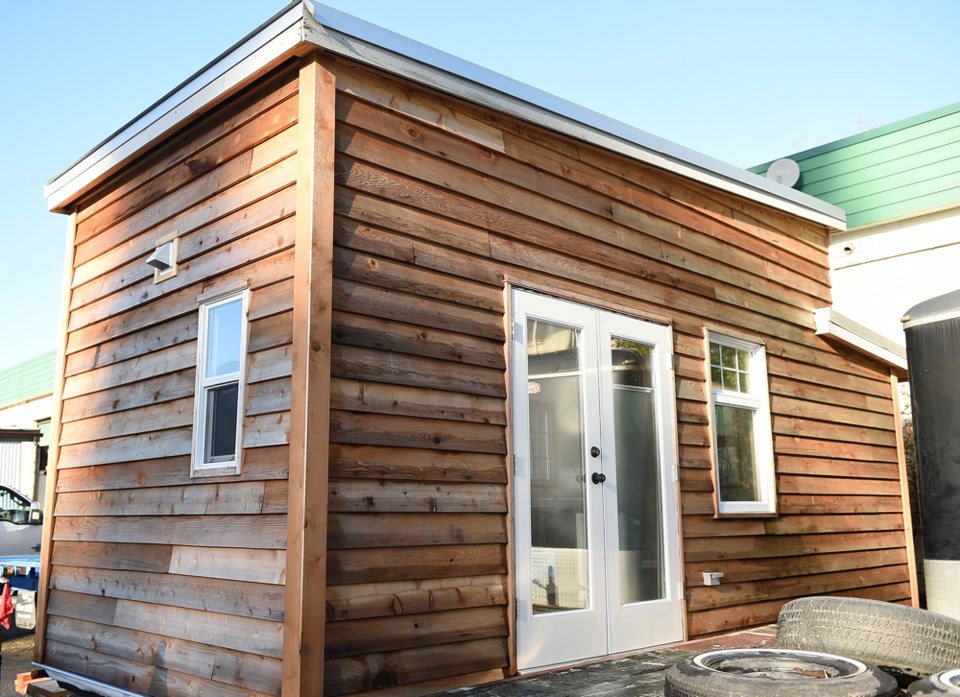Small is beautiful.
This was the theme of a recent conference organized by , a non-profit organization created to throughout the province.
SHBC defines âsmall housingâ as just enough space to live in. Depending on the household, it may be anything between 200 and 1,500 square feet, in a variety of different forms.
Â鶹´«Ã½Ó³»has been relatively progressive in allowing smaller dwellings compared to other jurisdictions. In California, accessory dwellings (ADUs) were illegal until quite recently, when a broad coalition was successful in legalizing them. Now, in some jurisdictions, they are becoming mandatory.
When Vancouverites think of small housing, we tend to imagine basement suites, laneway houses, or small highrise condos. But there are many variations: , lock-off suites, houseplexes to name just a few.
In the early 1990s, Jack Poole and David Podmoreâs VLC properties developed 600 Drake St. offering new rental suites under 350 sq.ft. When the proposal was first considered at council, then-alderman Jonathan Baker said living in these units would be like living in coffins. He was wrong.
Two decades later, Reliance Holdings developed Vancouverâs first micro-lofts in a renovated Gastown building. Those choosing to live in these homes were âtrading space for place.â While they were renting a 340 sq. ft. unit, they could enjoy a three million sq. ft. living room. The city is their living room.
In Vancouver, we think of a small lot as 33 feet by 120 feet and a small house around 2,000 sq. ft. However, there are examples of very livable homes on much smaller lots.
In 1972, I helped design an Ontario subdivision with detached houses on lots averaging 30 feet by 80 feet. While it did not turn out as attractive as I hoped after my colleague Daniel Libeskind convinced our boss some of the homes should be sited at random angles, it produced very affordable housing.
Langley, Wash. architect Ross Chapinâs âpocket neighbourhoodsâ have been much more successful. They comprise four to 14 small detached houses, typically less than 1,000 sq. ft., oriented around a common open space on a larger single or double lot. Parking is usually clustered away from the street.
This layout promotes a close-knit sense of community and neighbourliness with an increased level of contact amongst residents.
The , which has recently garnered much attention in Vancouver, can be another form of smaller housing. What is not commonly known is that duplexes are strata developments. For many, a semi-detached dwelling, which is half a house on its own lot, might be a better alternative.
Rowhouses are another small housing example. They can be rentals, condominiums or âfee-simple.â Fee-simple rowhouses are individually owned and not part of a condo.
While Â鶹´«Ã½Ó³»permits basement suites in single-family houses, there is no reason why they should not be allowed in duplexes and rowhouses.
âHouseplexesâ are small, multi-unit buildings designed to look like a large house. In some neighbourhoods, they can include five homes without looking much different from the street than the larger single-family house next door.
âLock-off suitesâ are small, legal secondary suites within apartments, about the size of a master bedroom. First conceived at Simon Fraser Universityâs UniverCity community, they achieve two objectives. Firstly, they can assist a condominium buyer to buy a larger two, three or four-bedroom unit by providing rental income until such time as they can afford the larger unit.Ìý Think of it as âa mortgage helper in the sky.â
Secondly, they provide affordable rental housing within condominium developments.
In his closing remarks at the conference, Urban Development Institute president Jon Stovell noted small housing has often generated significant community opposition. Some opponents even compare it to 19th century tenements. Instead, it should be viewed as just another housing choice.
While it may not be for everyone, for millennials, it can be the first rung on the rental or ownership ladder. Conversely, for many seniors, it may be a backyard âgranny suiteâ or small home in a collective building.
In an unaffordable city like Vancouver, small is not only beautiful, itâs necessary.
Ìý
Ìý
Ìý
Ìý



